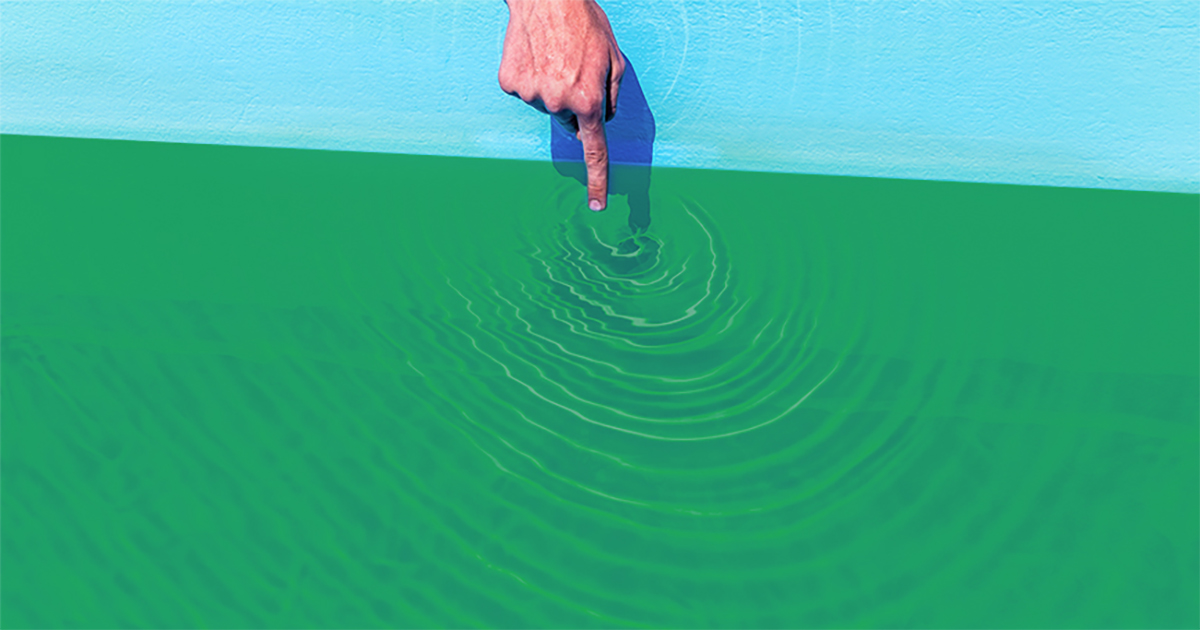
28 Feb How to clean a green pool

How to clean a Green Pool
If you have ever removed your pool cover after a lengthy off-season only to see that your pool resembles a swamp then you’ve encountered the infamous green pool. This is the result of a serious chemical imbalance as well as plenty of neglect. Your pool needs to be shown plenty of TLC even during the off-season to remain at its sparkling best. Fortunately, you can clean up a green pool on your own and expensive pool cleaners can be avoided. Keep reading to find out how.
What makes the pool green?
You need to understand what causes your water to turn green before you can begin clearing it up. The simple answer to the above question is algae. When there’s a chemical imbalance in your pool algae is given the chance to grow. Also, algae grow when you don’t regularly scrub your pool walls, liner and surroundings.
The six steps to clearing up your green pool
- Determine if your pool is too far gone
- Test your pool’s chemical balance
- Shock your pool
- Pump and filter your pool to achieve optimum pH levels
- Apply some elbow grease
- Consistently maintain your pool going forward
Step 1: Is your pool water too green?
If you can see between 20 and 30cm into your pool then you’re in luck – you can perform a green pool recovery all on your own. If you can’t, then your best bet is to call in a pool servicing professional who will most likely drain, acid-wash and then refill your pool – sounds expensive! That’s why you should maintain your pool regularly to avoid any potential headaches.
Step 2: Test your pool water:
The next step is to test your pool water’s pH levels, also known as the chemical balance. The ideal pH level is 7.4, which is the same pH level as that of the human eye. Green pools are often indicators of little to no chlorine inside the pool, meaning you will have to shock it. Though, simply adding lots of chlorine will result in cloudy water. So, it’s important to know your pH levels first.
When you test your water using a test kit, your pH level should be lower than 7.2. If it’s not, bring the pH level down by adding about 4 litres of muriatic acid. Allow your pool water to circulated for about an hour first and then test your levels again.
Step 3: Shock your pool:
Now that your pH levels are low enough, it’s safe to shock your pool with lots of chlorine. You can use either granular or liquid chlorine to do this. If you opt for the former, then evenly distribute about 2.5kg of granular chlorine across your pool surface. If you would rather use liquid chlorine then pour about 5 litres into your pool. In any case, make sure your pool filter is on when you’re shocking your pool.
The next step is to kill the algae by adding in some algaecide. Then, it’s time to add some floc so that the dead algae may clump together and you can easily scoop it out of the pool.
Step 4: Run your pumps and filters to regain chemical balance:
At this stage you will let your filters and pumps do the heavy work. There are three main filter types – DE, sand and cartridge filters — and how you run your filter depends on what type you have. You will have to run each type at least for 24 hours. Thereafter, your water should look completely transformed. It could still be a little cloudy and that’s nothing to worry about.
Step 5: Brush and filter your pool:
The next step is to use your muscles to get rid of hard-to-remove stains. You should notice some green patches along your pool walls. No matter how stubborn they are, just keep scrubbing. They will eventually disappear. Also, keep your filters running for the next few days. This will help get rid of that cloudiness we mentioned above.
If you find, however, that your pool is still green then you will definitely need to call in the professionals. This is why the next step is very important.
Step 6: Consistently maintain your pool going forward
Don’t forget to show your pool much needed TLC, ever. By doing a little bit often, you will be avoiding major headaches that could involve expensive bills. It’s important to note that winter pool maintenance is just as important as summer.

